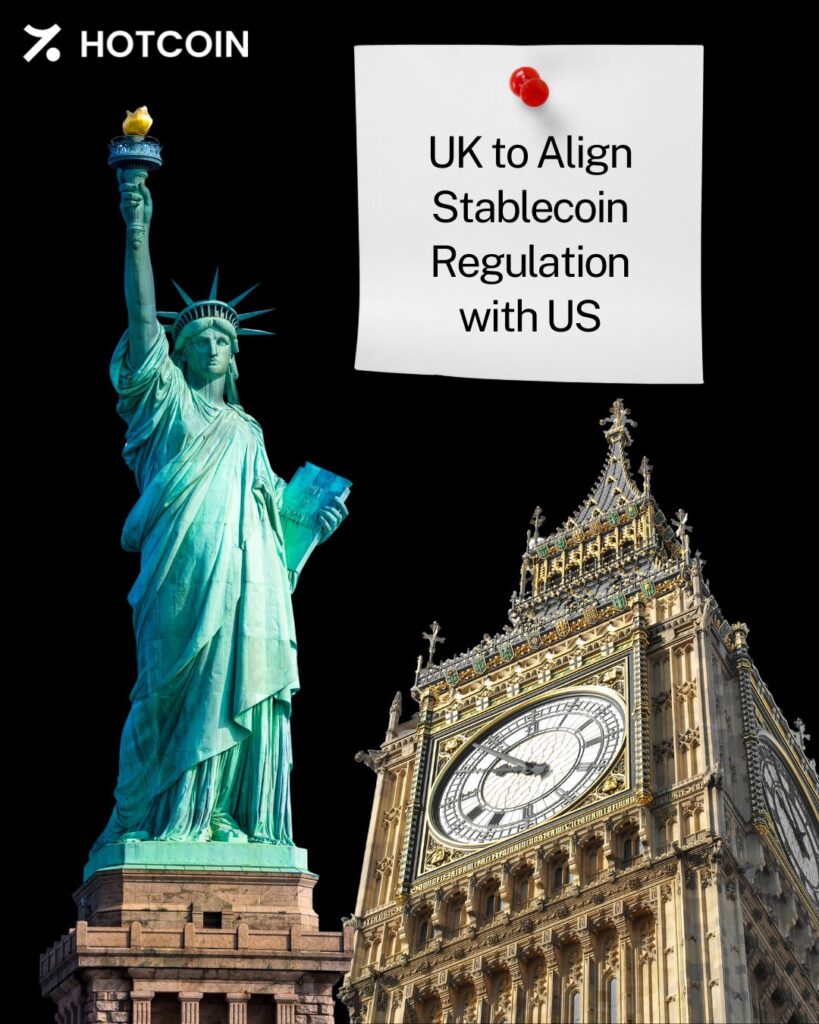
November 6, 2025 — The Bank of England (BoE) has made clear that the United Kingdom (UK) intends to develop its regulatory framework for stablecoins in close alignment with the United States (US).
What Is The UK Changing
- Deputy Governor Sarah Breeden stated at the SALT conference in London that the UK and US authorities are working together, including the BoE, the UK Treasury and the US Federal Reserve, to synchronise standards for stablecoins.
- The UK plans to publish a consultation paper on stablecoin regulation on 10 November 2025, with the intention of having a new regulatory regime in place by end-2026.
- Under the proposed framework, the BoE will regulate “systemic” sterling-pegged stablecoins (those deemed likely to be widely used for payments) while other stablecoins will fall under the oversight of the Financial Conduct Authority (FCA) with a lighter regime.

Why This Matters
- Minimising regulatory arbitrage: The BoE emphasised that consistent rules across major economies are crucial to avoid loopholes and fragmentation in the global stablecoin market.
- Financial stability risks: Stablecoins, especially if widely adopted as payments, pose possible risks to the banking system (e.g., large flows out of bank deposits into stablecoins). The BoE has flagged these concerns previously.
- Maintaining UK competitiveness: The UK government and regulators are under pressure to keep pace with the US and other jurisdictions in digital-asset innovation, aligning regulations is part of that strategy.
Key Features Under Discussion at the UK
Some of the elements that the proposed UK regime may include:
- Authorization of stablecoin issuers with high-quality asset backing (such as short-term government debt) to support redemption at par value.
- Caps or limits on individual stablecoin holdings in certain contexts until the regime is deemed stable.
- Resolution regime for failure of stablecoin issuers, and access to central bank facilities for truly money-like stablecoins.
Challenges & Industry Reactions
- Some industry groups warn that the UK’s proposed ownership limits for stablecoins (e.g., £10,000–£20,000 for individuals) could place the UK at a disadvantage compared with other jurisdictions.
- Others caution that aligning too closely with the US may import risks if US rules prove less robust, or create dependency on US regulatory outcomes.
- The timeline is ambitious: getting meaningful regulation in place by end-2026 will require coordination across regulators, issuers and market participants.
Broader Implications
For users, issuers and financial-service providers, the harmonisation between the UK and US signals a move toward greater legitimacy for stablecoins, but also stricter oversight. Entities issuing or using stablecoins should monitor:
- How jurisdictions define “systemic” versus non-systemic stablecoins;
- What backing asset requirements are imposed;
- What holding limits or caps may apply;
- Cross-border regulatory compliance and passporting between UK and US.
Looking Ahead
The UK’s consultative process beginning November 2025 will be critical in shaping the final rules. Observers will watch whether the UK chooses to mirror US legislation closely or diverge in key areas (e.g., consumer protection, holding caps, issuer authorization). The establishment of a UK-US transatlantic task force for digital-asset regulation (announced earlier in 2025) also adds momentum to the cooperation.
Your Trades. Our Priority. Hotcoin.
Hotcoin Official Site: https://www.hotcoin.com
Hotcoin Twitter: https://x.com/HotcoinGlobal
Hotcoin Telegram: https://t.me/HotcoinEX
Hotcoin Chinese Twitter: https://x.com/hotcoinzh
Hotcoin Chinese Community: https://t.me/hotcoinglobalcn
Hotcoin YouTube: https://www.youtube.com/@hotcoinglobal
